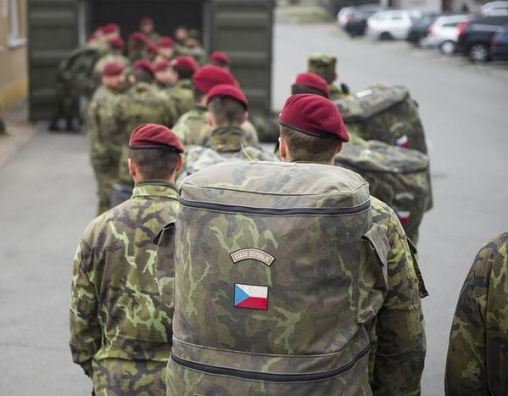 When 200 Dutch troops converged on the air force base here this week, it wasn’t a routine case of reporting for duty but a test for a key element of NATO’s response to the renewed Russian threat.
When 200 Dutch troops converged on the air force base here this week, it wasn’t a routine case of reporting for duty but a test for a key element of NATO’s response to the renewed Russian threat.
Just after 9 a.m. Thursday, the final 80 troops, who had just traveled 60 miles from their home base, hopped off buses, grabbed their rucksacks and duffels from an accompanying green truck, and hurried into the air terminal.
The North Atlantic Treaty Organization, in an exercise playing out in 11 countries, made its first attempt this week to test its revamped rapid-reaction force, the alliance’s highest-profile response to Moscow’s aggressiveness in Ukraine and elsewhere.
The goal was to see if the troops could be ready to board planes 48 hours after receiving an “order to move,” as specified in a new NATO policy. Previously, NATO’s response force aimed to mobilize in five days to two weeks, which NATO leaders agreed last September was too slow for new global threats.
About 1,500 troops took part in this week’s exercise, which lasted from Tuesday through Thursday. In eight countries, mostly headquarters personnel were involved, while in Germany, 900 troops moved to four central garrisons.
And in the Netherlands and Czech Republic, troops were actually transported to air bases as if they were about to be flown to a crisis area….
Brig. Gen. Kees Matthijssen, commander of the Dutch 11th Air Mobile Brigade, said the exercise did reveal that adjustments had to be made. For example, commanders had not allowed enough time for the administrative requirements of transporting ammunition by air….
More elaborate exercises are scheduled in the coming months. In June, troops won’t stop at the air bases, as they did Thursday, but will fly from several European countries to the Zagan Military Training Area in Poland, where they will practice maneuvers they might undertake in a real crisis.
Image: Czech soldiers participating in exercise Noble Jump, April 8, 2015 (photo: USAF Sgt. Andrew Davis/NATO)
